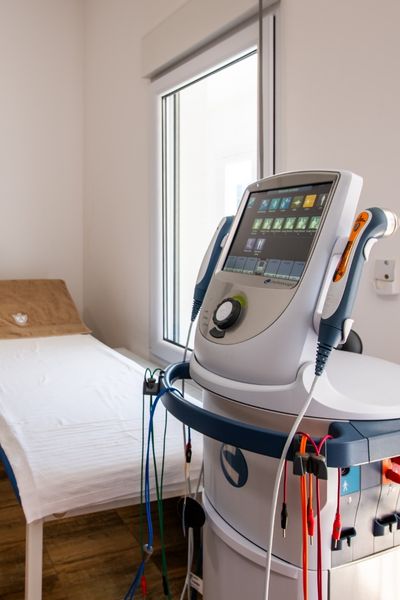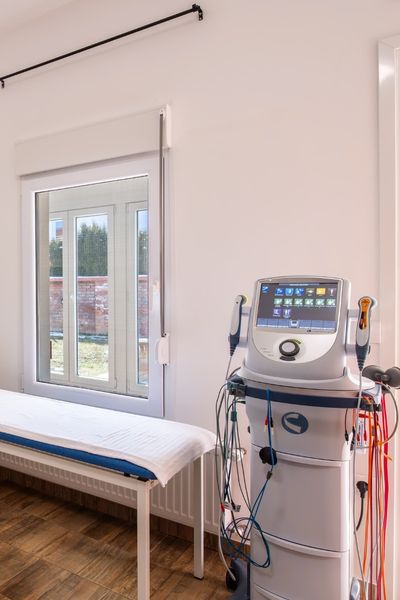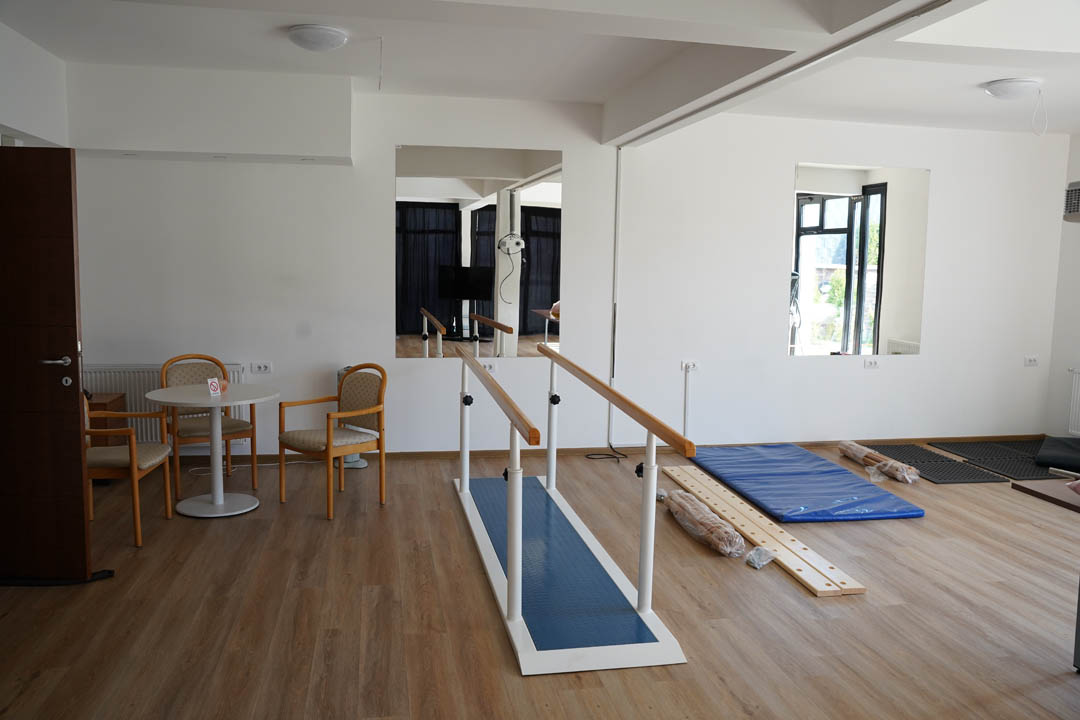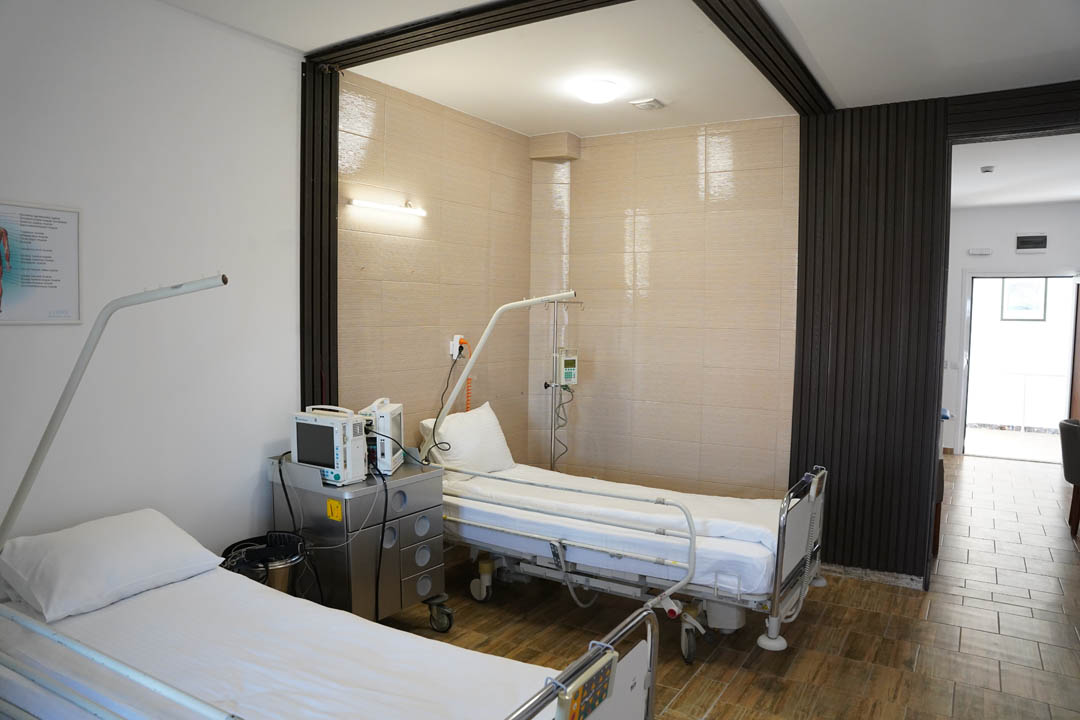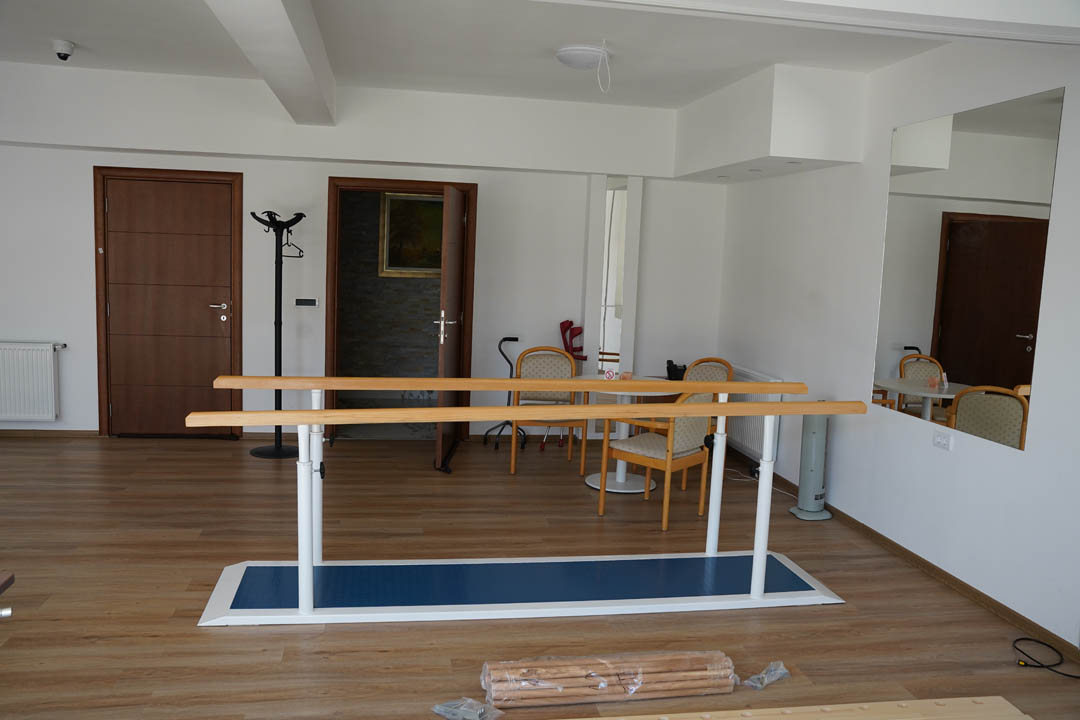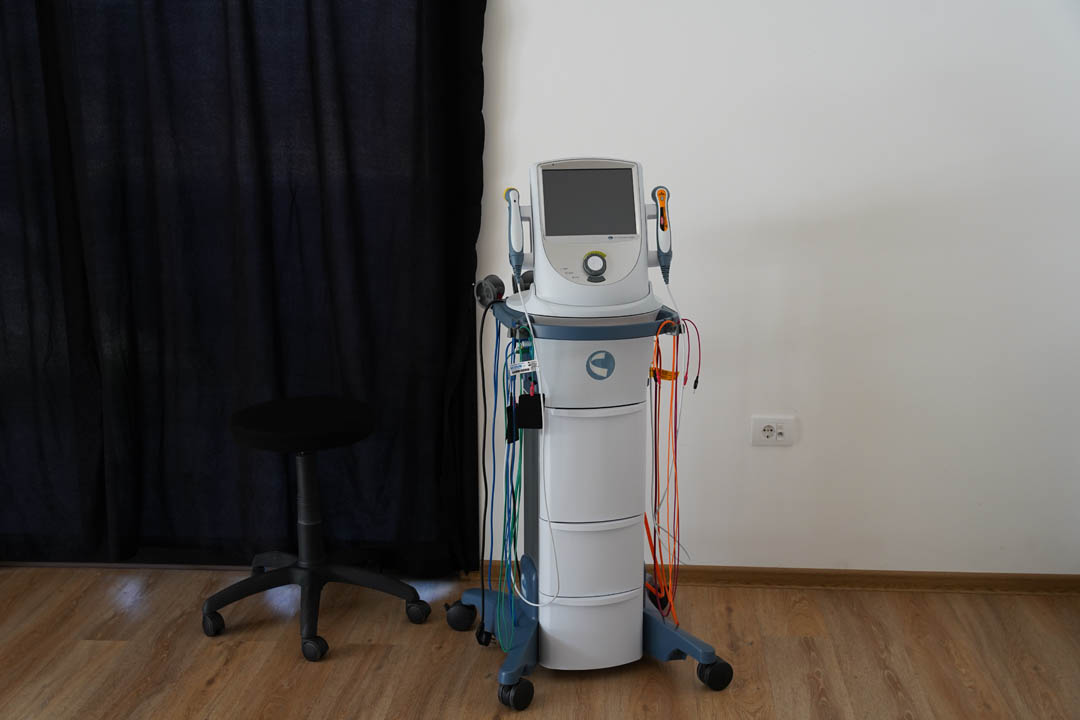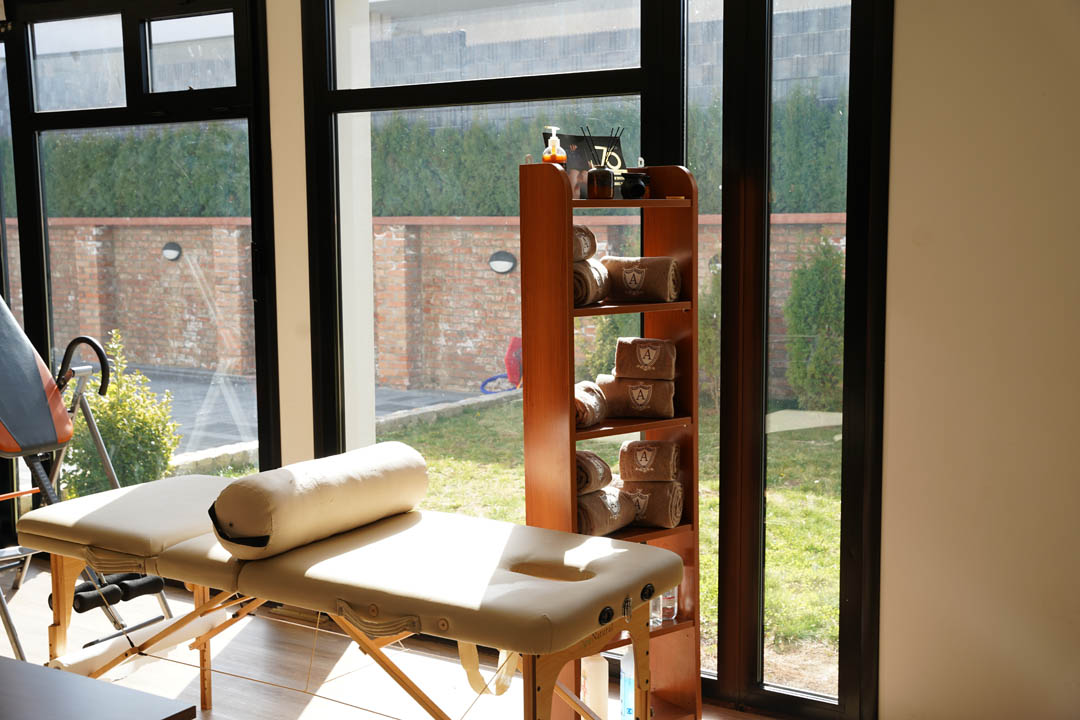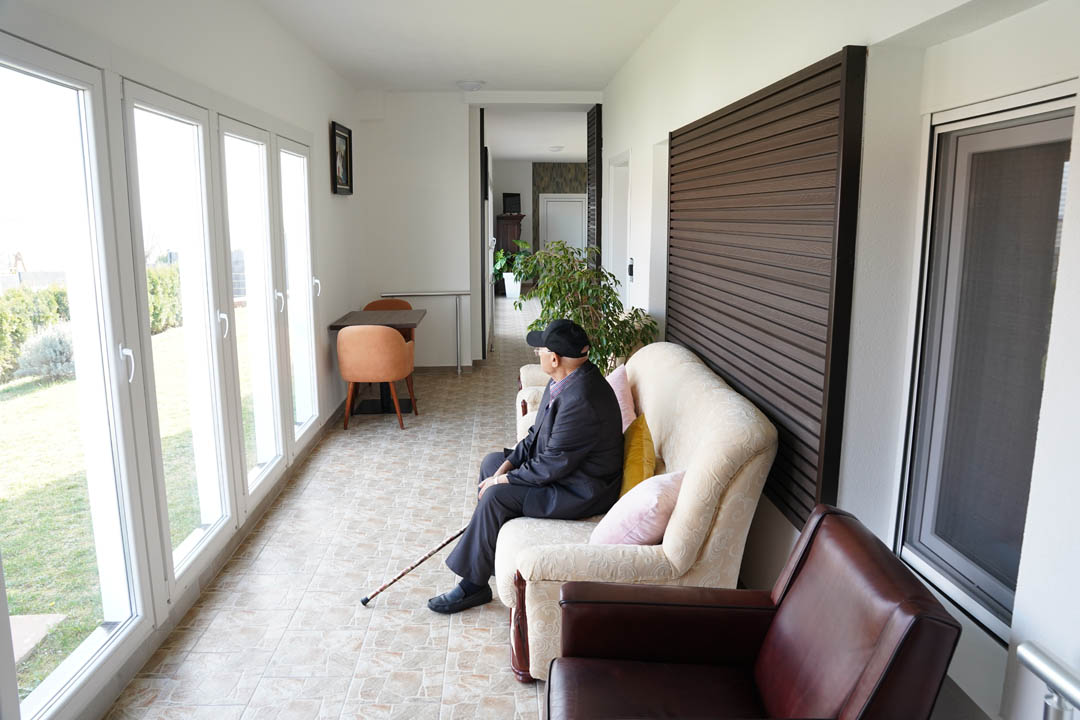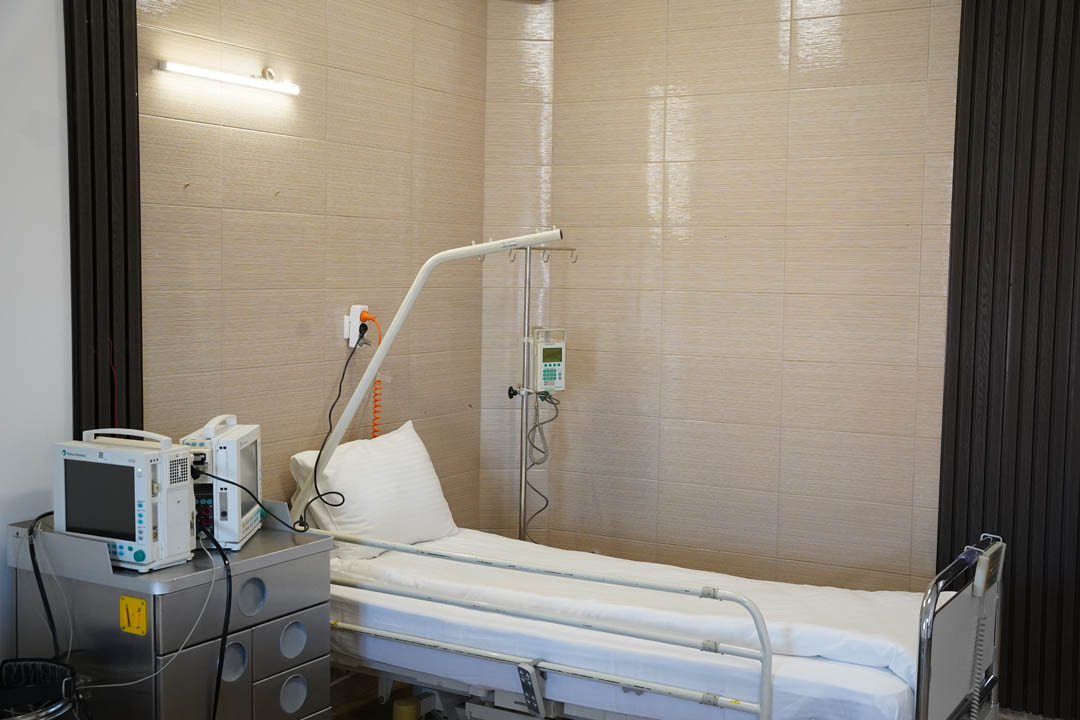Is the electrotherapy process painful?
In most cases, electrotherapy is experienced as a gentle and pleasant procedure, without pain or discomfort. During treatment, patients may feel mild tingling, vibration, or warmth, which is a completely normal reaction to the electric current.
The current intensity is precisely adjusted according to each individual’s sensitivity and condition, ensuring the therapy is effective yet always comfortable. The goal is not to cause pain, but to activate the body’s natural recovery processes.
Therapy is conducted under the supervision of a physiotherapist, who monitors reactions during each session and adjusts parameters as needed. This supervision makes electrotherapy a safe method.
Does electrotherapy have side effects?
Electrotherapy is considered a safe and non-invasive method, but as with any therapy, it’s important that it is applied according to professional evaluation and with an individual approach.
Most patients experience no side effects. However, in rare cases, mild redness, tingling sensations, or fatigue in the treated area might occur; these are temporary reactions and do not require therapy cessation.
Electrotherapy is not recommended for individuals with pacemakers, pregnant women, people with epilepsy, malignant conditions, severe heart problems, or open wounds at the site of application. Thus, an evaluation of each patient’s condition is conducted before treatment to ensure safety.
Applied in the right conditions and under professional supervision, electrotherapy provides benefit without risk, which is why it has been used in rehabilitation worldwide for decades.
When is electrotherapy the right solution?
Electrotherapy is particularly beneficial for conditions characterized by prolonged pain, weakened muscle function, or impaired circulation.
It is most commonly applied for issues affecting movement and daily activities, such as:
- Pain in the back, neck, and shoulders.
- Degenerative joint conditions (hip, knee).
- Neurological conditions with reduced movement control.
- Rheumatic diseases with inflammation and swelling.
- Postoperative periods and recovery after trauma.
- Reduced mobility following prolonged inactivity or hospitalization.
In situations requiring muscle activation, relief of chronic symptoms, or improvement of circulation without excessive strain, electrotherapy is often the primary therapeutic option.
Moreover, electrotherapy combines very successfully with kinesiotherapy, manual techniques, and other physical medicine methods, enabling quicker initiation of movement and more efficient tissue regeneration.
Patient experiences with electrotherapy
Years of practice and working with diverse patients have shown that electrotherapy provides excellent results for numerous conditions. It is most commonly used for rheumatic disorders, neurological problems, sports injuries, as well as after fractures, sprains, or surgeries. It is particularly effective in treating chronic pain in the spine, neck, knees, and other joints.
Although it can be applied independently, in practice it is often combined with other physical therapy methods such as kinesiotherapy or massage to achieve a complete therapeutic effect. Many users’ experiences confirm relief and improved mobility after just a few treatments, while the full effect is attained through continuity and regular professional supervision.
Electrotherapy Pricing
The price of electrotherapy depends on the type of therapy, duration of treatment, and the total number of scheduled sessions. Based on a professional assessment, an individualized plan is created to provide optimal results with clearly defined costs.
For more information about pricing, availability, and scheduling, please visit our Contact page.
At Rehab Senior Center, other therapies available for combination with electrotherapy include physical therapy, kinesiotherapy, magnetic therapy, ultrasound therapy, hydrotherapy, contrast hydrotherapy bath, and massages.


